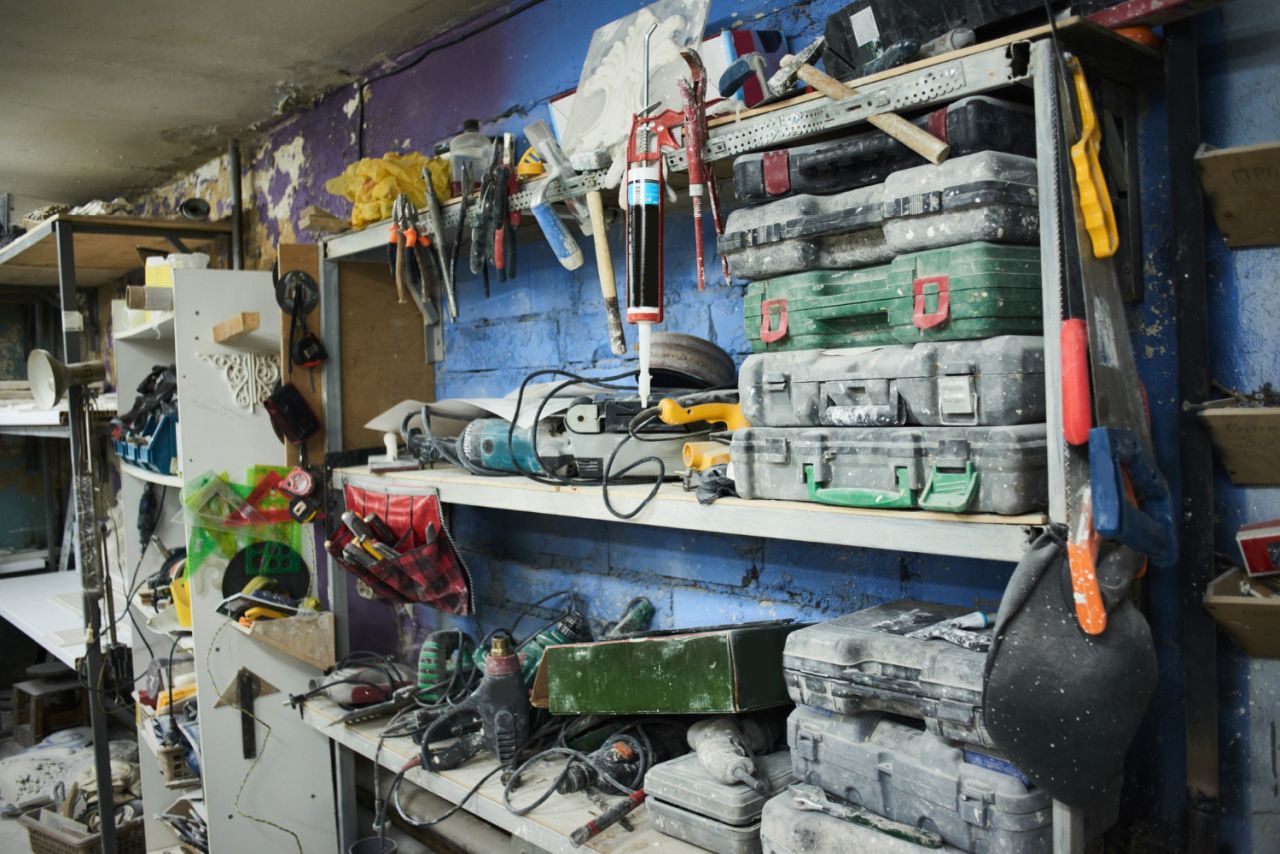As seasons shift, storing winter clothing and gear in an organised, accessible way is essential for preserving items and ensuring a hassle-free transition each year. Proper storage protects your winter clothing, outdoor gear, and seasonal items from damage while saving valuable closet space.
This guide offers seasonal storage tips and solutions to help you organise winter gear for easy access and long-term preservation.
Let's get straight to the point
Focus on preparing, sorting, and selecting the right storage options to keep winter gear well-organised and easily accessible during seasonal transitions.
Start by cleaning and drying all items, grouping similar items, and using stackable plastic bins and breathable garment bags to protect against moisture and pests.
Vacuum-sealed bags work for bulky items but should be avoided for natural fibres. Optimise closet space by using vertical storage and multi-purpose organisers.
Label all storage containers clearly, and consider climate-controlled storage for delicate fabrics. Use cedar blocks for pest protection and ensure air circulation to prevent mildew. Place heavy items on the bottom, wrap delicate fabrics in tissue paper, and keep them out of direct sunlight.
For smoother transitions, designate a dedicated space for off-season items, repair clothing before storage, and avoid common mistakes like over-packing and using cardboard boxes. These seasonal storage tips will help preserve winter clothing and maximise storage space year-round.
Preparing for Seasonal Storage
Effective seasonal storage starts with preparation. Before packing away winter gear, it's essential to properly clean, dry, and inspect each item for damage.
Cleaning and Preparing Winter Gear
Before storage, clean winter clothing thoroughly to prevent stains, mould, or odours from setting in. Delicate items like winter coats and bulky sweaters should be dry-cleaned to ensure they are free of dirt and grime.
Similarly, outdoor equipment like camping gear and gardening tools should be washed and dried completely.
Choosing the Right Storage Containers
The right storage containers will protect your winter items while optimising space. When choosing between plastic storage bins, vacuum-sealed bags, and garment bags, consider the unique needs of different items.
Vacuum-sealed bags for Bulky Items
To save space, vacuum-sealed bags work well for bulkier items like winter clothing and blankets.
These bags compress stored clothing, minimising the space they take up. Avoid vacuum sealing natural fibres like wool, as compression can damage these materials.
Maximising Closet Space
Limited closet space can make seasonal storage challenging. By optimising vertical space, you can make room for winter and off-season items without overcrowding.
Use Vertical Space
Install shelves or hanging organisers in closet spaces to maximise vertical storage. Stackable storage boxes or plastic bins can store winter clothing and gear without occupying floor space.

Effective Seasonal Storage
Implementing effective seasonal storage techniques helps maintain an organised seasonal wardrobe, ensuring all items are easy to find when needed.
Climate-Controlled Storage
If you live in a humid environment, consider using a climate-controlled storage area. Excess humidity can lead to mildew and damaged clothing, particularly delicate fabrics.
Self-storage units with climate control are ideal for long-term storage of seasonal items vulnerable to temperature and humidity changes.
Maintaining Your Storage
Proper maintenance of storage areas helps keep items in good condition. Periodic checks are essential to prevent issues like moisture build-up or pest infestations.
Use Cedar Blocks or Mothballs for Protection
Cedar blocks offer a natural way to protect stored clothing from pests like moths. Placing cedar blocks or sachets of dried lavender in storage containers helps to keep clothing fresh and protected.
Storing Delicate or Special-Care Items
Certain winter items, such as delicate fabrics or expensive coats, require special care during storage.
Keep Sunlight Away from Stored Items
Store delicate fabrics away from direct sunlight, as prolonged exposure can cause fading and fabric damage. Opt for shaded or closed storage areas to preserve the colours and quality of these items.
Seasonal Swap Tips
Making the seasonal transition from winter to summer (and vice versa) go smoother with efficient swapping tips.
Designate a Spare Room or Storage Unit for Seasonal Swaps
Dedicate a storage unit or spare room for off-season clothes and gear. This space can store seasonal items that are not currently needed without cluttering the main living areas.
Rotate Seasonal Clothing and Gear Efficiently
When swapping between seasonal wardrobes, rotate stored items to make the current season's items more accessible. This allows for easy access to frequently used clothing and gear.
Making the Most of Your Seasonal Clothing
Optimising your seasonal wardrobe involves regular maintenance and mindful organisation.
Keep an Inventory of Stored Items
Maintaining an inventory of stored items, including winter clothes, outdoor equipment, and holiday decorations, helps avoid unnecessary purchases and ensures that all essential items are accounted for.
Common Seasonal Storage Mistakes
Avoiding common storage mistakes ensures that your winter gear remains in excellent condition and is ready to use yearly.
Avoid Using Cardboard Boxes for Long-Term Storage
While cardboard boxes are convenient, they offer little protection against moisture and pests. For added protection, use plastic storage boxes with tight lids.
Avoid Packing Items Too Tightly
Overpacking storage containers can result in wrinkled or damaged clothing. Allow enough space in each container for airflow and easy access.
Conclusion
Organising winter gear for seasonal storage is essential for keeping items safe, accessible, and ready to use each year.
By choosing the right storage solutions, maintaining proper air circulation, and avoiding common mistakes, you can save space, extend the life of your seasonal wardrobe, and enjoy an easier transition each season.
Whether using plastic bins, breathable garment bags, or a climate-controlled storage unit, these seasonal storage tips will help you make the most of your storage space while preserving your valuable winter clothing and gear.

Frequently Asked Questions
What’s the Best Way to Prepare Winter Clothing for Seasonal Storage?
Clean and dry all winter clothing thoroughly before storage to prevent stains, mildew, and odours. Delicate items, like winter coats and sweaters, should ideally be dry-cleaned.
Inspect each item for damage, such as missing buttons or broken zippers, and repair it before storing it. Proper preparation will help maintain clothing quality through the off-season.
What Types of Storage Containers Are Ideal for Winter Gear?
Stackable plastic bins with tight lids are perfect for general winter storage, as they protect against dust, moisture, and pests. Use a breathable garment bag for delicate fabrics to allow airflow and prevent mustiness.
Vacuum-sealed bags save space for bulky items like blankets but shouldn't be used for natural fibres, which need air circulation to stay in good condition.
How Can I Save Closet Space When Storing Winter Items?
Maximise closet space by using vertical storage solutions like shelves or hanging organisers. Multi-purpose organisers, such as shoe racks or drawer dividers, help keep smaller winter items like gloves and scarves accessible.
Stackable bins and clear labels make finding items easy without taking up much floor space.
Should I Use a Climate-Controlled Storage Area for Winter Gear?
A climate-controlled storage unit is recommended for delicate fabrics if you live in a humid or damp environment. Excess humidity can cause mildew, which damages clothing and fabrics over time.
Climate-controlled storage maintains consistent temperature and humidity, protecting valuable or sensitive winter items.
What Are Common Mistakes to Avoid When Shopping for Winter Clothing?
Avoid overpacking containers, as this can lead to wrinkled or damaged clothing. Avoid cardboard boxes for long-term storage, as they don't protect well against moisture and pests.
Additionally, don't store winter items in damp areas like basements, as they're prone to mildew. Allow adequate air circulation and avoid tightly sealing natural fibres like wool, which can degrade without airflow.





